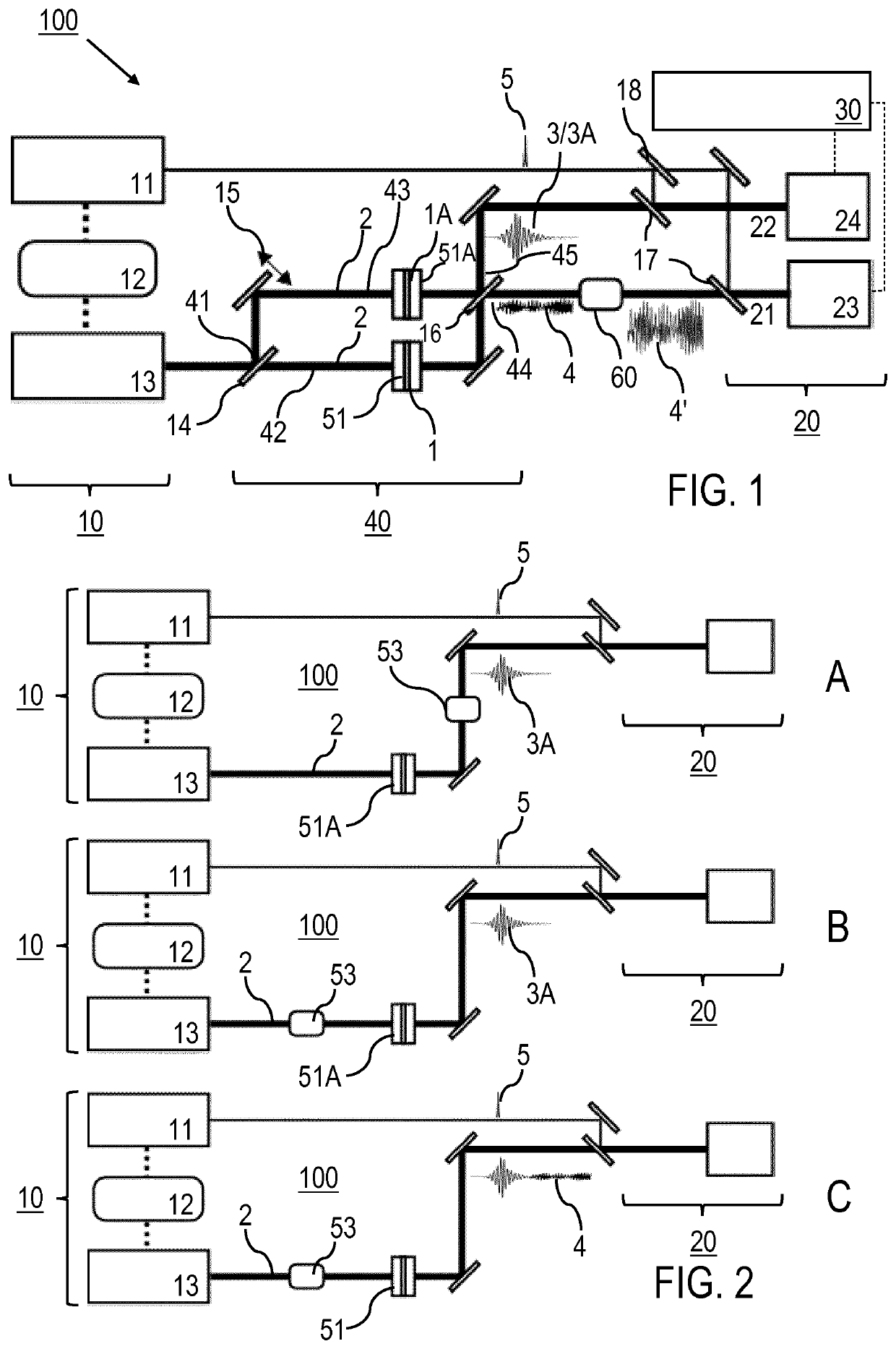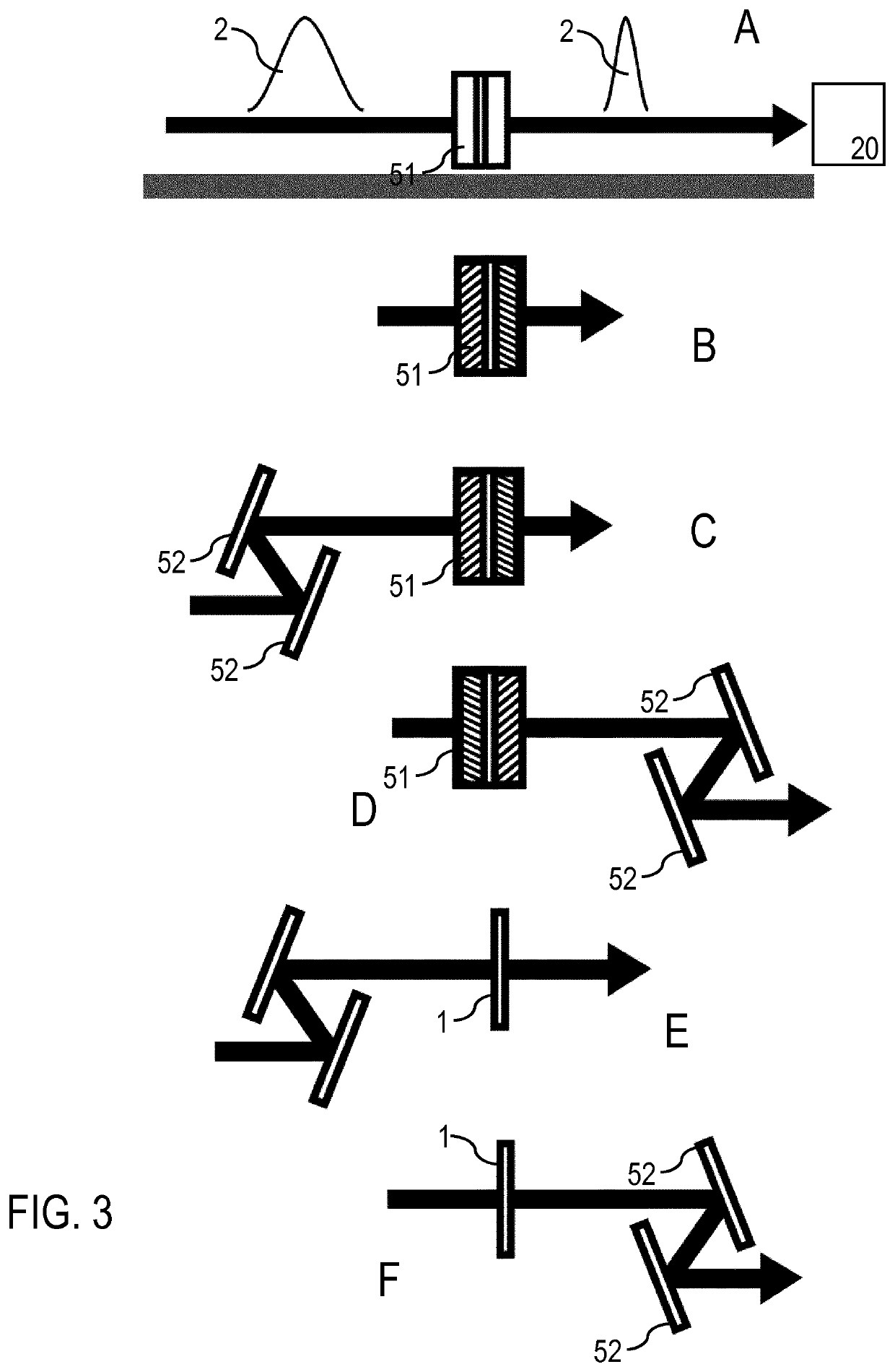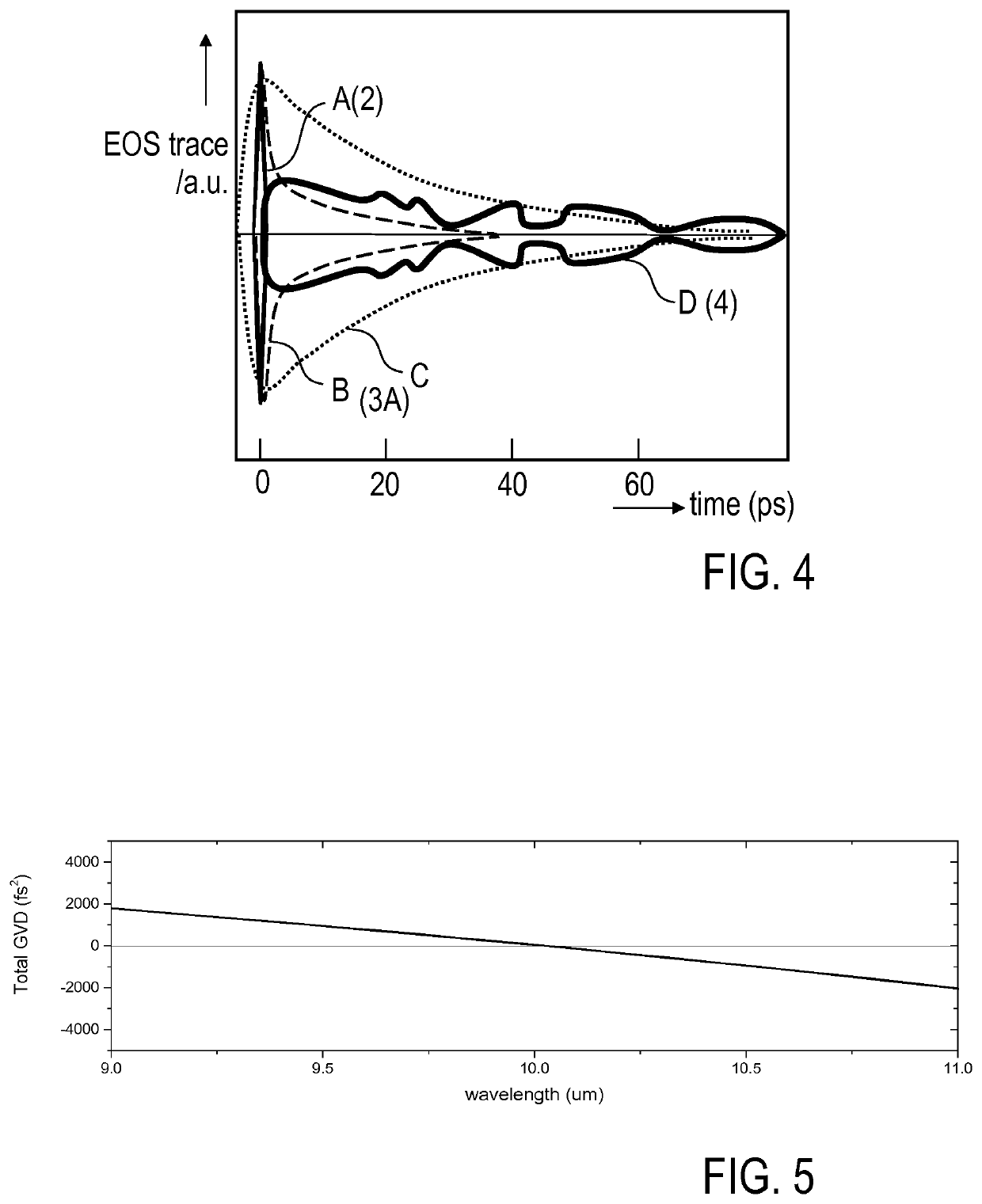Methods and devices for measuring changes in the polarization response of a sample by field-resolved vibrational spectroscopy
a vibrational spectroscopy and sample polarization technology, applied in the field of sampling technique, can solve the problems of long acquisition time, limited utility, and preceding sample wave compromising the sensitivity of sampling techniques for measuring the smallest gmf signal, and achieve the effect of improving sensitivity and/or reproducibility
- Summary
- Abstract
- Description
- Claims
- Application Information
AI Technical Summary
Benefits of technology
Problems solved by technology
Method used
Image
Examples
Embodiment Construction
[0070]Features of preferred embodiments of the invention are described in the following with reference to differential molecular fingerprinting including interferometric referencing (I), e.g. for an IR absorption or an SRS measurement (V), dispersion compensation of the reference wave (II), optimization of the interaction geometry (III) and / or optical amplification of the differential fingerprint (IV). The features (I) to (IV) implement inventive measures for adjusting the participating waves relative to each other such that contributions of the differential GMF are separated in space and / or in time from the fingerprint common to both the reference and the sample waves. For example, (I) provides a spatial separation of the differential GMF from the excitation wave and the reference wave by interferometric means, while (II) introduces a temporal separation of the differential GMF. The features (I) to (IV) can be provided alone or in any combination. As an example, the features (II) a...
PUM
 Login to View More
Login to View More Abstract
Description
Claims
Application Information
 Login to View More
Login to View More - R&D
- Intellectual Property
- Life Sciences
- Materials
- Tech Scout
- Unparalleled Data Quality
- Higher Quality Content
- 60% Fewer Hallucinations
Browse by: Latest US Patents, China's latest patents, Technical Efficacy Thesaurus, Application Domain, Technology Topic, Popular Technical Reports.
© 2025 PatSnap. All rights reserved.Legal|Privacy policy|Modern Slavery Act Transparency Statement|Sitemap|About US| Contact US: help@patsnap.com



